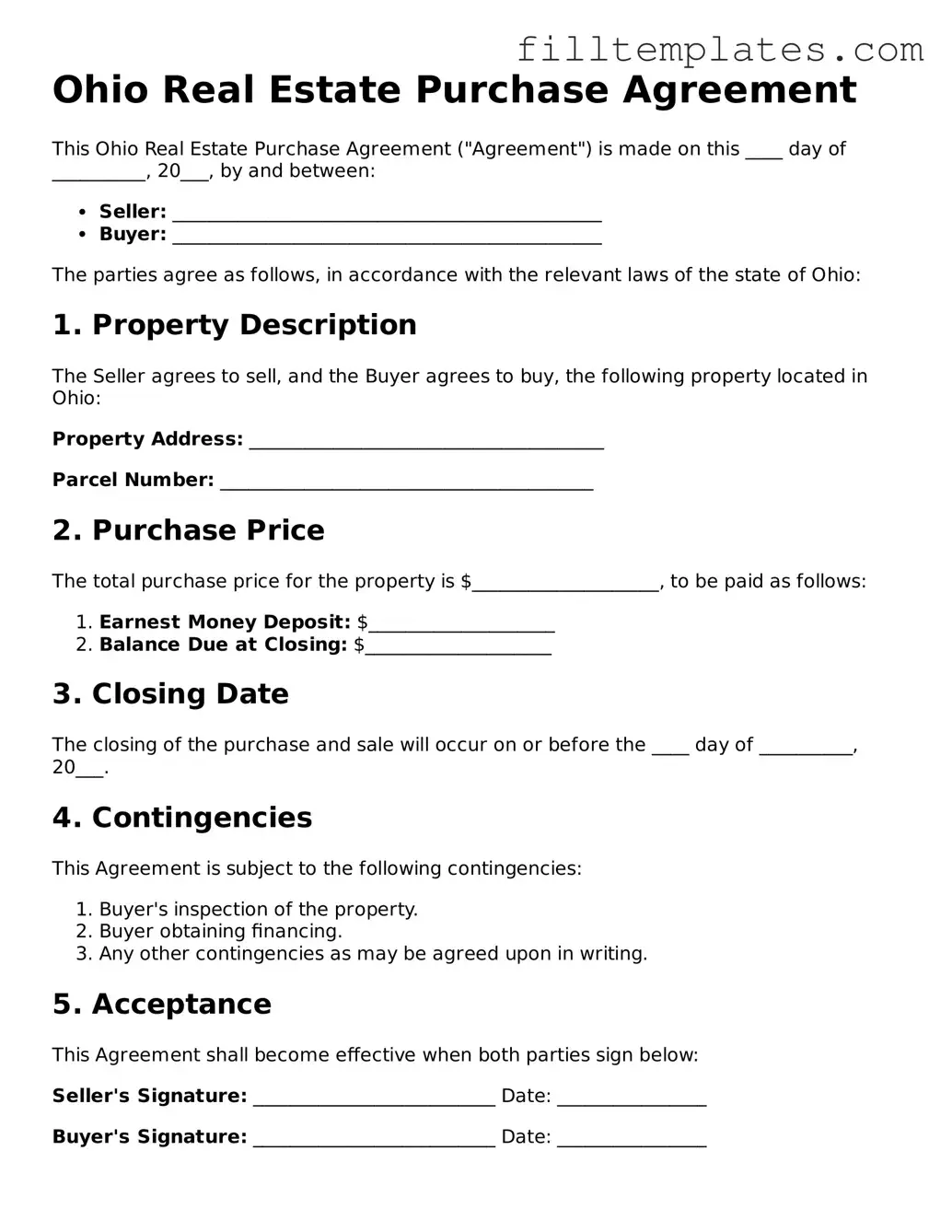Ohio Real Estate Purchase Agreement
This Ohio Real Estate Purchase Agreement ("Agreement") is made on this ____ day of __________, 20___, by and between:
- Seller: ______________________________________________
- Buyer: ______________________________________________
The parties agree as follows, in accordance with the relevant laws of the state of Ohio:
1. Property Description
The Seller agrees to sell, and the Buyer agrees to buy, the following property located in Ohio:
Property Address: ______________________________________
Parcel Number: ________________________________________
2. Purchase Price
The total purchase price for the property is $____________________, to be paid as follows:
- Earnest Money Deposit: $____________________
- Balance Due at Closing: $____________________
3. Closing Date
The closing of the purchase and sale will occur on or before the ____ day of __________, 20___.
4. Contingencies
This Agreement is subject to the following contingencies:
- Buyer's inspection of the property.
- Buyer obtaining financing.
- Any other contingencies as may be agreed upon in writing.
5. Acceptance
This Agreement shall become effective when both parties sign below:
Seller's Signature: __________________________ Date: ________________
Buyer's Signature: __________________________ Date: ________________
By signing this Agreement, all parties acknowledge that they understand and accept the terms and conditions herein stated.
It is advisable for both parties to consult with legal and real estate professionals before entering into this Agreement.
This format is intended to comply with Ohio state laws regarding real estate transactions. Make sure to fill out all relevant blanks accurately to create a binding Agreement.
